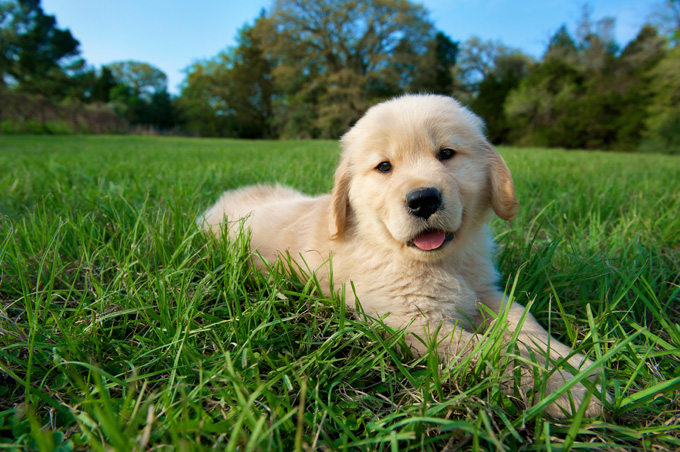by The Crunchy Canine | Nov 30, 2023 | BLOG
Did you know that every breed has a purpose? Every bred was bred for a specific job. Many people buy a dog based on looks, or because they met one or two dogs of a certain breed, and thought “wow I really like this breed, I think I should get one”. The problem is that without doing any research on the breed, you might be in for a big surprise when the dog is displaying the exact behaviours they were bred to do (the behaviours you may not like). We get MANY inquiries for dog training where owners are complaining about their dogs behaviour and when we see what breed the dog is, we know that this owner did not do their research. It is the owners responsibility to learn about the breed, and find out how they can meet the dogs needs and keep them happy and fulfilled. It is not the dogs responsibility to go against their genetics and conform to meet the human’s wants simply because the human did not do their homework.
So what is it that your dog was bred to do? Even if you already have a dog, and you did not research the breed, it is not too late. We see people learn, evolve, grow, and adapt all the time to the dog that they have! It comes down to what are you willing to do to be a better more educated dog owner.
Here is a list of the top 15 most common breeds and/or breed categories that we see in pet dog homes that often display behaviours that the owner was not prepared for and what they were bred for:
- German Shepherds – Bred for herding and guarding sheep. They are extremely athletic, and while they should be friendly they are bred to be inherently leery of people outside of their inner circle (which is why they make great guard or protection dogs).
- Retrievers (Golden Retrievers, Labrador Retrievers and Poodles) – Bred to retrieve water fowl for hunters. Love water, will fetch/retrieve indefinitely. Strong drive to work and put objects in their mouth.
- Hounds (Dachshunds, Beagles, Coon Hounds etc) – Bred to follow their nose. Tracking is their main purpose in life. Their nose will override almost anything else. Incredibly independent, bred to work and cover plenty of ground.
- Mastiffs (English, Bull, Cane Corso, Dogo D’Argentina etc) – Bred to guard and protect homes and property. Instinct to protect from other animals including dogs and large animals like bulls, bears and even lions.
- Rottweilers – Bred to protect and guard livestock and property. Naturally leery of outsiders.
- Dobermans – Bred for protection. A guardian breed, naturally suspicious.
- Terriers (Jack Russel, Parsons, Yorkshire, Wheaten etc) – Bred to hunt and kill rodents and small animals. Strong prey drive and willingness to not back down. Will shake and kill small animals. One of the more intense working breed categories.
- Boxers – Originally bred for hunting and guarding. High energy, protective in nature.
- Pointers (Weimaraners, German Short Haired Pointer, Vizla etc) – Bred to hunt large game and adapted to smaller animals. They excel in hunting pointing, and retrieving.
- Border Collies & Australian Shepherds – Bred to herd livestock. Intense drive to control and move other animals and people. Bred to use their mouth to control livestock as well by nipping at heels/ankles.
- Bernese Mountain Dogs – Bred to pull carts and to drive cattle, as well as protect livestock from predators.
- Doodles (all of the varieties) – Half retriever, half whatever they are bred with. You can get the best of both worlds or the worst of both worlds.
- Spaniels (Cocker, Springer and Brittany) – Bred to flush out game for hunters. Natural swimmers and will retrieve water fowl.
- Schnauzers – Bred to hunt vermin and protect livestock.
- Huskies & Malamutes – Bred to pull heavy sleds and cover ground. Malamutes were also bred to protect their families.


by The Crunchy Canine | Jan 17, 2022 | BLOG
If you are a family with kids and are considering getting a new dog, we hope this question has crossed your mind! We see so many people get dogs that are just not a good fit for families and all because they maybe met one dog of that breed that they really liked, or they just like the look of the dog! It is incredibly important to do your research and really get a feel for what you are signing up for! Just because you met a really nice, friendly, and calm German Shepherd does not mean that all German Shepherds will be the same.
So to save you some time, we have compiled our list of favourite breeds for families with children!
Active families with young children – For active families with young children we recommend Beagles or Labrador Retrievers. Both breeds are known to have easy going dispositions, friendly, should not have stranger danger, and love to get out and have some fun. Both have their own unique instincts based on what they were bred for but they should be adaptable to family life. We feel strongly that if you have a household with people coming and going, you should steer clear of breeds that genetically are predisposed to have stranger danger or be weary of people who are not in their inner circle. Labs and Beagles should welcome guests into your home with a wagging tail, enjoy being around kids, and always be up for adventure! Of course your Lab will want to retrieve things, and your Beagle will want to sniff, but neither of those traits should affect them being an amazing family pet! Plus both are super cute! Unfortunately, both do shed though. When choosing a Lab breeder, make sure you pick one that does not breed for colour (and certainly no dilute colours). We prefer Black labs and Yellow labs over Chocolate for personality and trainability. Golden Retrievers are another fan favourite and we do love them, but over the past few years we have seen breeding go down hill so if you can find a really good breeder then they are also a great choice!
Families with young children who are not overly active – If you have young kids but you’re family is not overly active you need to make sure you can provide your new dog with suitable exercise. However, there are two of our favourite breeds that will require less exercise than most. We absolutely adore the Havanese and King Charles Cavalier Spaniels. Both breeds are small, non-shedding, and low energy. In fact they were basically bred to be lap dogs. Unlike many other small breeds, they should be friendly, easy to train, and up for adventure but also happy to spend the day bingeing Netflix. If you are looking for a larger breed dog you can luck out with a lower energy lab if you go with an English or “show” lab, and if you are open to a giant breed the English Mastiff or the Leonberger are our favourites.
Families with young children who want a “doodle” type dog – Doodles are all the rage these, but there are so many bad “breeders” out there that we strongly recommend you consider other breeds instead. While the Doodle type dogs are cute, they are often very high energy, can be neurotic, prone to running away, and just overall challenging to train especially when you have young kids in the house. If you like the look we would recommend a Portuguese Water Dog, Barbet, or Standard Poodle. You might even consider a Wheaten Terrier if you are up for the challenge of a terrier breed! If you do go for a Doodle type dog, stick with the original Labradoodle or Goldendoodle. There are some nice dogs who are other Doodle type mixes but keep in mind you get both the best and the worst of the breeds so that in itself can be very challenging!
Families with young children who want a dog for protection – Unless you are buying a dog to train for protection then avoid this train of thought. We are not saying that a German Shepherd cannot be a good family dog. We are saying they were not bred for that and unless you understand the breed really well and are up for the challenge then you might be very disappointed. We see so many Shepherd type dogs available for rehoming around the 6 months mark and many from families with young kids. Another trend we are seeing is power breeds like Cane Corsos, Rottweilers, and Bully type breeds common among families with young kids. Again, we are not saying it wont go well, but we very often see it not go well. These dogs may be great with your family but are often prone to stranger danger, resource guarding and dominant behaviour around lower standing members of the family.
So to sum that up…for families with kids we love:
- Labs
- Beagles
- Golden Retrievers
- Havanese
- King Charles Cavalier Spaniels
- English Mastiffs
- Leonbergers
We hope this helps you on your journey of selecting the right dog for your family!


